
The Three Degrees.
(From left, Helen Scott, Freddie Pool, Valerie Holiday)
One of the most wondrous things about growing up in a showbiz family is that from a very early age you find yourself attending concerts. If you’re even luckier, those concerts encompass a wide range of styles and tastes.
The very first I ever attended were Leonard Bernstein’s Young People’s Concerts with the New York Philharmonic at Lincoln Center. My recently departed cousin Barry Finclair was one of their violinists, so he always got us great seats. But the first solo concert I ever saw was PDQ Bach, when we were visiting relatives in Poughkeepsie. I was maybe seven at the time, I hated it and I fell asleep midway through. In retrospect, I so wish I hadn’t, because Peter Schickele is a genius.
Aside from all the Broadway shows I ever saw and have seen, not to mention thousands of cabaret acts, concerts are my favorite things to attend. The first one I really remember clearly was Carly Simon, at Hofstra in 1980. This was before she caught stage fright, right around the same time when “Vengeance” was a big hit. I want to say it was a good show, but it really wasn’t. She did all the big hits, like “Anticipation” and “That’s The Way I’ve Always Heard It Should Be” and “Legend In Your Own Time” and “Nobody Does it Better,” not to mention “You’re So Vain,” but she was also trying to transition into harder rock and it was a study in fruitlessness. But I love that I got to see her.
Then in ’82, Mom took me to an Elly Stone concert at the Bottom Line, may it rest in peace. THIS was a big deal. I don’t expect half of you reading this to know who Elly is or remotely care, but she’s kind of a legend; she was the star of “Jacques Brel is Alive and Well and Living in Paris” and was basically considered the new American Piaf in her day. My mom was such a fan that Elly was and still is considered a goddess in our house (I’m friends with Elly now, all these years later, and she thinks that’s hilarious). But that was the night I fell in love with concertgoing. We actually sat through the second show, and it was also the night I became acquainted with the wonderful work of Kitty Hendrix, who sang backup for Elly and also became a friend of mine. Plus, who wouldn’t want to be thirteen years old and taken to see a show at the Bottom Line?
A year after that I had a chance to see Pete Seeger in concert, which really gave me my love of folk music. He was doing a very informal show in Westchester as a benefit for the Clearwater Project, with which he’s fiercely committed to clean up the Hudson River. As a special treat, he invited Arlo Guthrie to come up on stage and join him to duet on “Guantanamera.” To call it glorious would be an understatement. Which is why, when I was in college in 1986, I took an elective seminar called “The American Folk Tradition,” hosted by Mary Travers. Every week she would have a guest from the folk music world come and do an interview for about forty minutes, and then they’d do a mini-concert for the rest of the hour, sometimes joined by Mary and sometimes not. Because of that, I got to see such artists as Odetta, Judy Collins, Richie Havens, Buskin & Batteau, and the New York Choral Society. The best was on the last day of the seminar, when she had Peter Yarrow as her guest. After the interview, they got up together and sang “Lemon Tree” and “500 Miles,” and then Peter said, “Mary, that was fun, but I keep feeling like there was something missing.” Then we heard a guitar strum from the back of the house, we all turned around, of course it was Paul Stookey, and we all went wild. He strolled down the aisle, playing and singing “The Wedding Song” and joined them on stage, and they gave us a blissful concert for the next hour. It was other-worldly.
That same year, David Bowie played at the Garden with his “Spiders from Mars” tour, and they just happened to add a second date. So my friend Jessica, who is a major Bowie fan, called me and said, “Look, they’ve added a second date and I have no money. If you can get us two tickets I’ll be your friend forever.” Now, I am not the biggest Bowie fan on earth by a longshot, but I knew what a great show he puts on plus I’d never seen a show at the Garden, and I had the cash so I got us the tickets. Whether I’m a fan of his or not, I cried my eyes out when he sang “Jean Genie.” It was THAT good.
That was the same year that the Monkees (minus Michael Nesmith) embarked on their “Pleasant Valley Sunday” tour, and it was coming to Pier 86 (when they still did concerts there). So my friend Sandy begged me to get tickets for her and myself. I had a mad crush on Peter Tork, so I didn’t exactly need a lot of persuasion. We attended together, and they were amazing, but best of all was that for their opening acts they had Herman’s Hermits featuring Peter Noone, as well as Gary Puckett and the Union Gap, and The Grass Roots, with whom I’ve had a lifelong love affair (and they sang EVERYthing, “Sooner or Later,” “Live for Today,” “Midnight Confessions,” “The River Is Wide,” you name it).
Right around that same time and through the late 80s, I caught three shows at the Bottom Line that absolutely changed my life for their greatness. The first was Phoebe Snow (again with friend Jessica). The second was Laura Nyro (with a boyfriend whose name I can’t remember) and the third was Janis Ian (alone, but we were all united as one in her genius). I had a ticket to see Joan Armatrading three weeks later, but that afternoon I caught a vicious flu and had to give the ticket to a friend.
In 1990, my life was to rearrange when I was offered a job as a cabaret reviewer and features contributor for a magazine called Night & Day. My very first assignment was to review a Peggy Lee concert at The Ballroom. And I’d not been a huge fan of Peggy Lee until then, but this was an assignment, after all. So I spent days figuring out what to wear, what to do with my hair, even what pen to bring with me to take notes. Miss Lee walked out onto that stage with a nine-piece band and knocked my socks off; it was the sweetest trial by fire anyone could ever experience at twenty-one years of age, to be shown into the Ballroom, guided to the best seat in the house, encouraged to order anything I’d like to eat or drink for free, watch Peggy Lee for an hour, go home and write about it, and then GET PAID!
As if that wasn’t enough, four days later they sent me to the Beacon to review a major concert experience called “Heartstrings.” They rented me a limo, and my cherished friend Kim and I got all gussied up and attended the show and the party afterwards at Citicorp Market. It had a core cast and a script of which the theme was a fable about AIDS infiltrating humanity, and I was afforded the opportunity to discover some really fantastic musical theater performers (including a sensational vocalist named Mary Beth Purdy, who brought the house down when she sang “Come Rain or Come Shine” and has also become a friend of mine since then) but even more than this, it was hosted by Christopher Reeve (darling man, who I got to meet that night and may he rest in peace) and Marlo Thomas, and included such delicious moments as Tommy Tune dancing to “Kicking the Clouds Away” with a chorus of beautiful girls and Barbara Cook knocking all of us on our asses by singing “Love Don’t Need a Reason” by Peter Allen.
The next ten years were spent with attending a LOT of cabaret and jazz shows, two highlights of which were Dr. Hook at the Village Gate and Chaka Khan at the Blue Note (and she is so short you can’t believe it). Then came 2001, when sort-of-ex-husband and I met (long story, we were together and then apart and together again and then apart and now we’re sort of…I’m not sure), and I’m thrilled to say that he LOVES concerts. The first was Jane Olivor at Westbury, about seven weeks after we met because we’re both major fans, and we subsequently attended four more of hers at different venues. (As most of you know, Jane and I eventually worked together on a project and she did me dirt, so I refuse to ever see a concert of hers again. Whenever the lunatic does one). But we attended a whole big bunch of them together. The memorable standouts are of course Cher (in her first Farewell Tour, hee hee) at the Garden, Bette Midler in the “Kiss My Brass” tour (also at the Garden, on the memorable night she was flying off stage on the carousel horse to end the first act and it got stuck in mid-air), Linda Eder at Carnegie Hall (to which we brought his parents, who bitched about my getting such crappy seats), and Il Divo at Radio City.
And then there was the night, in 2002, when he said to me, “Let’s catch a concert at Jones Beach this summer. Look up who’s playing. You pick the artist.” So I looked it up, and there happened to be a Three Dog Night concert, and I worship Three Dog Night. But the problem with a Three Dog Night show is that there’s never a guarantee that Chuck Negron will be in shape to go on, and if he’s not in shape to go on, they cancel altogether and don’t give refunds. So I figured we shouldn’t chance it. I said, “Styx?” He said no. I said, “Supertramp?” He said no. I said, “Pat Benatar?” He said, “Certainly not. I hate her.” (So much for me picking the artist, and I should have known then that the marriage was in trouble). So then I said, “How about Hall & Oates, with Todd Rundgren as an opening act?” THAT idea he liked. So we got tickets. And they put on a GREAT show; they sang every hit except “Private Eyes.” The downside was Rundgren, who had cocaine running down his face from the moment he came out to sing “Hello, It’s Me.”
Now, I also have this friend named Jennifer. Our birthdays are two days apart, so we can never forget. And she always goes out of her way to get me something incredible as a gift. That’s my Lovey. (I call her Lovey and she calls me Bunny. Don’t ask, it’s a friend thing). Anyhow, in ’07 she called me and said, “So what am I getting you this year?” You should also know if you don’t already that I collect giraffe statuettes. Fifty-eight and counting, to be precise. So I said, “A crystal giraffe from Swarovski.” She said, “No giraffes. I’ve given you enough giraffes.” So I said, “A set of All-Clad cookware. My friend Susan Scudder says you have to be married for forty years before you earn a set of All-Clad.” She said, “I’m not buying pots. What do you want more than anything that you can’t afford?” I said, “Get me a ticket to the Streisand show this autumn at the Garden.” She said, “But that’s October. I want you to enjoy it on your birthday.” I said, “You’re asking me, I’m telling you. I’ll wait three months to enjoy it if it means I can see Streisand.” So she got me a ticket, and the show was on a Monday night (the 9th, if I recall, John Lennon’s birthday). As I was dressing to go to the show, she called me and said, “I know how much you’re looking forward to tonight and I hate to ask this, but they’ve added a second show for Wednesday and if you can possibly wait, I can get you upgraded to a Skybox in one of the Club Suites for that night.” So I waited the two nights. And it was the best thing I ever did. I saw Streisand from the best seat in the house.
Much more recently and as many of you know, I’ve been taking a lot of road trips with dear childhood friend George. Mostly New England but also Long Island. Anyway, all of a sudden after one of our trips this summer he offered me a ticket to go with him to the Beacon and see the Dukes of September, which is Boz Scaggs, Donald Fagen of Steely Dan, and Michael McDonald of the Doobie Brothers. Would YOU say no? So of course we went, and it was absolutely magical.
The reason I bring all of this to light is because last night, Scott Barbarino (my cherished publisher at NiteLifeExchange.com) invited me to come see The Three Degrees do their show at Iridium. This will probably be their last time in New York; they’re hitting the road in a few days to do concerts in Japan again. For those of you unfamiliar with The Three Degrees (and shame on you if you are), they’re the female vocal trio who scored a huge hit in 1974 with the song “When Will I See You Again?” The current group is not comprised of the original members, which started in Philly in ’63, but they are three fabulously-talented women named Valerie Holiday, Helen Scott and Freddie Pool. And their energy is mesmerizing. It was literally one of the greatest concerts I have ever seen. Of course they sang that hit, but also “Dirty Ol’ Man,” “Shake Your Groove Thing,” “Maybe,” and did an incredible tribute to their fellow artists from Philadelphia (The O’Jays, McFadden & Whitehead, The Trammps, etc).
In closing, it was a trip to the moon on gossamer wings. And I can’t wait to go see another concert. Soon.
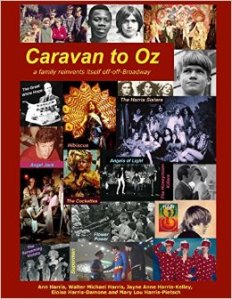 Anyone who has ever availed themselves of the Off-Off-Broadway experience in New York City, whether as a performer, a crew member or simply “one of those little people out there in the dark,” will truly sink their literary teeth into Caravan to Oz, a splendid history of one family’s journey into a most exciting period in the American theater in the Big Apple. Anyone who hasn’t ever availed themselves of the Off-Off-Broadway experience in New York City, whether as a performer, a crew member or simply “one of those little people out there in the dark,” will truly sink their literary teeth into the book all the same. And in any case, this two-hundred-and-seventy page tome laden with stunning photography, emerges as a wondrous history lesson even to those not necessarily theater-oriented. To be succinct, it’s nearly impossible to put down once begun reading. The book bears vague similarities to Edie, the smash recounting of Warhol superstar Edie Sedgwick, except that in this case the story is actually told by the subjects in question, along with additional input by such legends of the Off-Off-Broadway scene and the cultural world at large as Tim Robbins, Bob Heide, Robert Patrick, Crystal Field, Mike Figgis, Mark Lancaster, Ritsaert ten Cate, and the late Ellen Stewart.
Anyone who has ever availed themselves of the Off-Off-Broadway experience in New York City, whether as a performer, a crew member or simply “one of those little people out there in the dark,” will truly sink their literary teeth into Caravan to Oz, a splendid history of one family’s journey into a most exciting period in the American theater in the Big Apple. Anyone who hasn’t ever availed themselves of the Off-Off-Broadway experience in New York City, whether as a performer, a crew member or simply “one of those little people out there in the dark,” will truly sink their literary teeth into the book all the same. And in any case, this two-hundred-and-seventy page tome laden with stunning photography, emerges as a wondrous history lesson even to those not necessarily theater-oriented. To be succinct, it’s nearly impossible to put down once begun reading. The book bears vague similarities to Edie, the smash recounting of Warhol superstar Edie Sedgwick, except that in this case the story is actually told by the subjects in question, along with additional input by such legends of the Off-Off-Broadway scene and the cultural world at large as Tim Robbins, Bob Heide, Robert Patrick, Crystal Field, Mike Figgis, Mark Lancaster, Ritsaert ten Cate, and the late Ellen Stewart.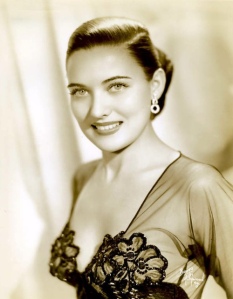
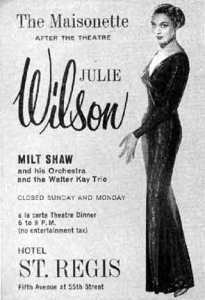
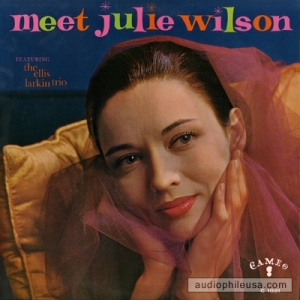
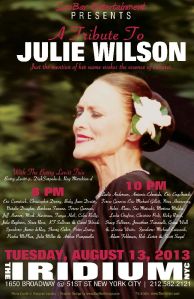
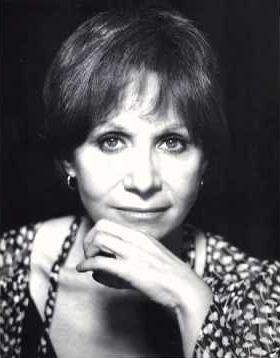
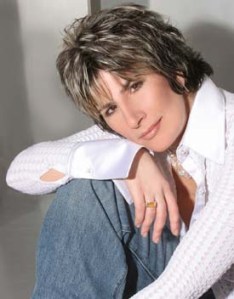




 AM: What do you like most about the recording process? What do you like least? Do you think you might do another recording anytime soon?
AM: What do you like most about the recording process? What do you like least? Do you think you might do another recording anytime soon?
